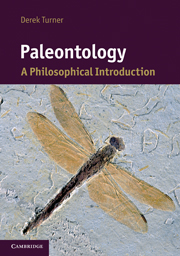Book contents
- Frontmatter
- Contents
- List of figures
- Acknowledgments
- 1 Introduction
- 2 A new way of seeing the fossil record
- 3 Punctuated equilibrium
- 4 Species and macroevolution
- 5 The case for species selection
- 6 Real trends, relative progress
- 7 Dynamics of evolutionary trends
- 8 Evolutionary contingency
- 9 Diversity, disparity, and the Burgess Shale
- 10 Molecular fossils
- Bibliography
- Index
2 - A new way of seeing the fossil record
Published online by Cambridge University Press: 05 June 2012
- Frontmatter
- Contents
- List of figures
- Acknowledgments
- 1 Introduction
- 2 A new way of seeing the fossil record
- 3 Punctuated equilibrium
- 4 Species and macroevolution
- 5 The case for species selection
- 6 Real trends, relative progress
- 7 Dynamics of evolutionary trends
- 8 Evolutionary contingency
- 9 Diversity, disparity, and the Burgess Shale
- 10 Molecular fossils
- Bibliography
- Index
Summary
In 1972, Stephen Jay Gould and Niles Eldredge published a paper entitled “Speciation and Punctuated Equilibria: an alternative to phyletic gradualism.” This paper, which built upon earlier work by Eldredge (1971), sparked a debate about what, if anything, paleontology has to add to evolutionary theory. Even though much of the controversy has died down, a good understanding of that debate is crucial for anyone who wants to think about paleontology's contribution to evolutionary theory. In this chapter, I will trace some of the main arguments in the early discussion of Eldredge and Gould's idea, but I want to do so with three guiding questions in mind:
Over the years, Gould repeatedly presented PE as posing a challenge to traditional evolutionary thinking. How exactly does PE depart from a reductionist – or as Gould often called it, an “extrapolationist” – view of evolution? And what exactly are the phenomena, trends, or patterns that call for such a departure?
To what extent did philosophical ideas that were “in the air” in the early 1970s – especially the ideas of Thomas Kuhn – influence the discussion of PE?
Since scientists cannot directly observe past evolutionary processes, and since they cannot experiment on large-scale evolutionary processes, how have they gone about trying to test PE?
- Type
- Chapter
- Information
- PaleontologyA Philosophical Introduction, pp. 16 - 36Publisher: Cambridge University PressPrint publication year: 2011



